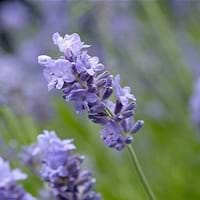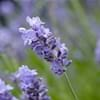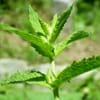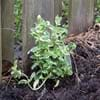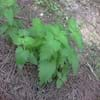Life Span
Perennial
Annual
Origin
Western Europe, Mediterranean
South America, Micronesia, New Zealand
Types
Lodden Blue, Royal Velvet,Sachet,Sharon Roberts,Mitchem Gray
Not Available
Number of Varieties
Not Available
Habitat
Rocky Mountains, Well Drained
coastal environs, Grassland, Roadsides, Waste areas, waterways
USDA Hardiness Zone
5-8
7-11
Sunset Zone
2a, 2b, 3a, 3b, 4, 5, 6, 7, 8, 9, 10, 11, 12, 13, 14, 15, 16, 17, 18, 19, 20, 21, 22, 23, 24
H1, 3a, 3b, 4, 5, 6, 7, 8, 9, 10, 11, 12, 13, 14, 15, 16, 17, 18, 19, 20, 21, 22, 23, 24
Habit
Clump-Forming
Clump-Forming
Flower Color
Purple, Lavender
Purple
Flower Color Modifier
Bicolor
Bicolor
Fruit Color
Sandy Brown
Not Available
Leaf Color in Spring
Light Green, Gray Green
Green, Light Green, Dark Green
Leaf Color in Summer
Light Green, Gray Green
Light Green
Leaf Color in Fall
Light Green, Gray Green
Green, Light Green, Dark Green
Leaf Color in Winter
Light Green
Dark Green, Tan
Leaf Shape
Pinnate
Grass like
Plant Season
Spring, Summer, Fall, Winter
Spring, Summer, Fall, Winter
Sunlight
Full Sun
Full Sun
Type of Soil
Loam, Sand
Loam
The pH of Soil
Neutral, Alkaline
Acidic, Neutral
Soil Drainage
Well drained
Well drained
Bloom Time
Early Summer, Summer
Summer, Fall
Tolerances
Drought
Drought, Salt
Where to Plant?
Ground, Pot
Ground
How to Plant?
Cuttings, Divison, Layering, Seedlings
Seedlings
Plant Maintenance
Medium
Medium
Watering Requirements
Keep the Soil well drained, Needs less watering
Average Water Needs
In Summer
Lots of watering
Lots of watering
In Spring
Moderate
Moderate
In Winter
Average Water
Average Water
Soil pH
Neutral, Alkaline
Acidic, Neutral
Soil Type
Loam, Sand
Loam
Soil Drainage Capacity
Well drained
Well drained
Sun Exposure
Full Sun
Full Sun
Pruning
Remove damaged leaves, Remove dead branches, Remove dead leaves
Remove damaged leaves, Remove dead branches, Remove dead leaves
Fertilizers
All-Purpose Liquid Fertilizer
All-Purpose Liquid Fertilizer
Pests and Diseases
cuckoo spot, Gray mold, Red blotch
Red blotch
Plant Tolerance
Drought
Drought
Flower Petal Number
Single
Single
Fragrant Bark/Stem
Yes
No
Foliage Texture
Fine
Fine
Foliage Sheen
Matte
Matte
Attracts
Birds, Butterflies, Flying insects, pollinators
Not Available
Allergy
Skin irritation, Vomiting
Itchiness
Aesthetic Uses
Beautification, Formal Garden, Hanging Basket, Landscape Designing, Showy Purposes, Used for decorating walls, fences, gates, hedges, etc.
Showy Purposes
Beauty Benefits
Beautiful Skin, Good Cleanser, Improve skin tone, Moisturizing, Perfumes
Not Available
Edible Uses
Yes
Sometimes
Environmental Uses
Air purification, Deer resistant, Food for birds
Air purification
Medicinal Uses
Antiseptic, Appetizer, Cholagogue, Diuretic, Sedative, Stomachic, Tonic
Not Available
Part of Plant Used
Flowers
Flowers, Leaves
Other Uses
Air freshner, Beneficial species for attracting pollinators, For making oil for cosmetics, Oil is used in perfume, soaps, creams, etc., Tea-like beverage can be brewed, Used as a condiment, Used as a flavouring in food
Animal Feed, Used as Ornamental plant
Used As Indoor Plant
Sometimes
No
Used As Outdoor Plant
Yes
Yes
Garden Design
Dried Flower / Everlasting, Container, Cutflower, Edging, Herb / Vegetable, Mixed Border, Rock Garden / Wall
Cutflower, Dried Flower/Everlasting, Feature Plant, Foundation, Groundcover, Mixed Border, Screening / Wind Break
Botanical Name
LAVANDULA angustifolia 'Munstead'
CORTADERIA jubata
Common Name
English Lavender, Munstead Lavender
Purple Pampas Grass
In Hindi
Lavandula angustifolia
Purple pampas grass
In German
Echter Lavendel
Lila Pampasgras
In French
Lavandula angustifolia
Pourpre herbe de pampa
In Spanish
Lavandula angustifolia
hierba púrpura pampas
In Greek
Lavandula angustifolia
Μωβ γρασίδι παμπάς
In Portuguese
Lavandula angustifolia
grama roxa pampas
In Polish
Lawenda wąskolistna
Purpurowy trawa pampasów
In Latin
Lavandyla angystifolia
Purpura Pampas herba
Phylum
Tracheophyta
Magnoliophyta
Class
Magnoliopsida
Liliopsida
Genus
Lavandula
Cortaderia
Clade
Angiosperms, Asterids, Eudicots
Angiosperms, Commelinids, Monocots
Tribe
Lavanduleae
Not Available
Subfamily
Nepetoideae, Not Available
Not Available
Number of Species
Not Available
Importance of Munstead Lavender and Purple Pampas Grass
Want to have the most appropriate plant for your garden? You might want to know the importance of Munstead Lavender and Purple Pampas Grass. Basically, these two plants vary in many aspects. Compare Munstead Lavender and Purple Pampas Grass as they differ in many characteristics such as their life, care, benefits, facts, etc. Every gardener must at least have the slightest clue about the plants he wants to plant in his garden. Compare their benefits, which differ in many ways like facts and uses. The medicinal use of Munstead Lavender is Antiseptic, Appetizer, Cholagogue, Diuretic, Sedative, Stomachic and Tonic whereas of Purple Pampas Grass is Not Available. Munstead Lavender has beauty benefits as follows: Beautiful Skin, Good Cleanser, Improve skin tone, Moisturizing and Perfumes while Purple Pampas Grass has beauty benefits as follows: Beautiful Skin, Good Cleanser, Improve skin tone, Moisturizing and Perfumes.
Compare Facts of Munstead Lavender vs Purple Pampas Grass
How to choose the best garden plant for your garden depending upon its facts? Here garden plant comparison will help you to solve this query. Compare the facts of Munstead Lavender vs Purple Pampas Grass and know which one to choose. As garden plants have benefits and other uses, allergy is also a major drawback of plants for some people. Allergic reactions of Munstead Lavender are Skin irritation and Vomiting whereas of Purple Pampas Grass have Itchiness respectively. Having a fruit bearing plant in your garden can be a plus point of your garden. Munstead Lavender has no showy fruits and Purple Pampas Grass has showy fruits. Also Munstead Lavender is not flowering and Purple Pampas Grass is not flowering . You can compare Munstead Lavender and Purple Pampas Grass facts and facts of other plants too.
